Element Quiz Generator
I’m giving my chemistry students weekly element quizzes until they have the symbols and names of the first 36 elements memorized. I broke the first 36 elements down into three sets. Each week, my chemistry students have 12 elements and their symbols to memorize from the periodic table.
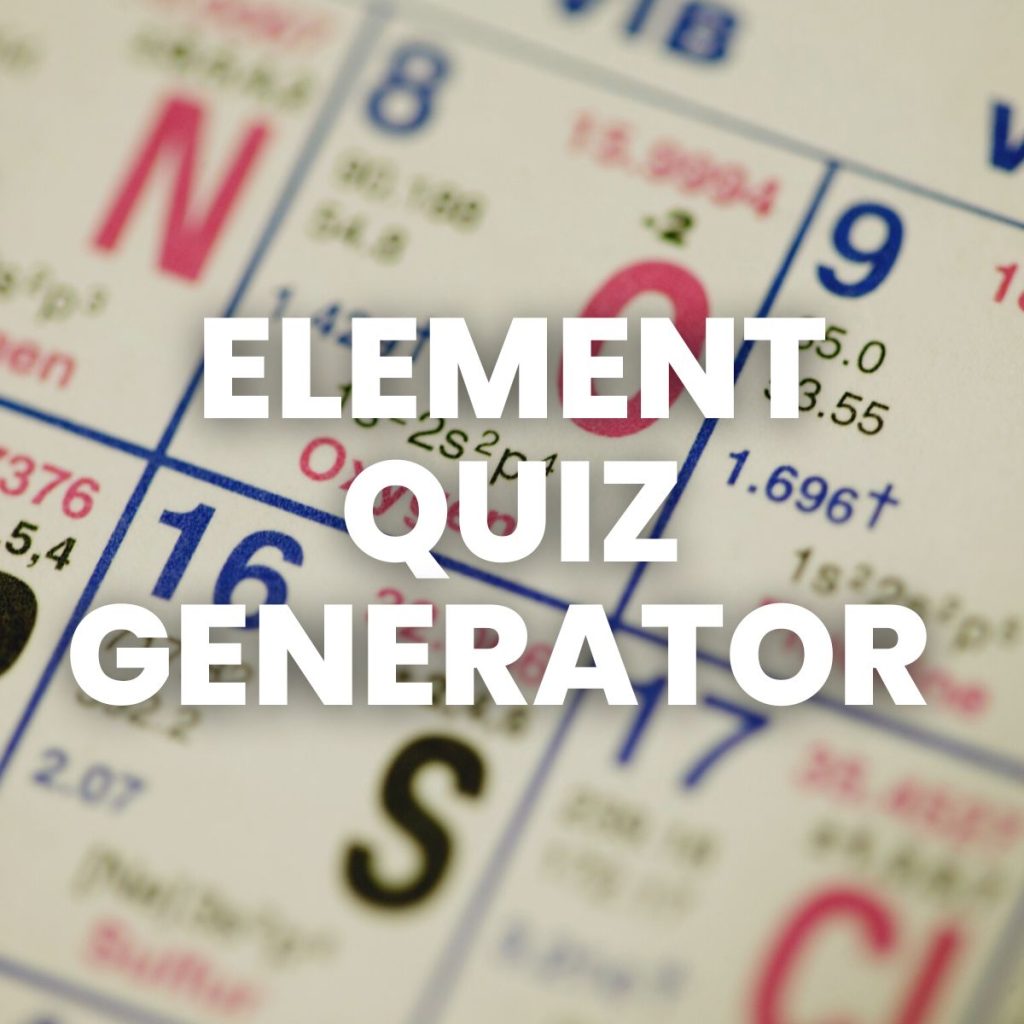
When I told my husband of my plan to write my element quizzes, he offered to help create an Excel Spreadsheet that would automatically generate random element quizzes. Of course, I took him up on his offer to create an element quiz generator!
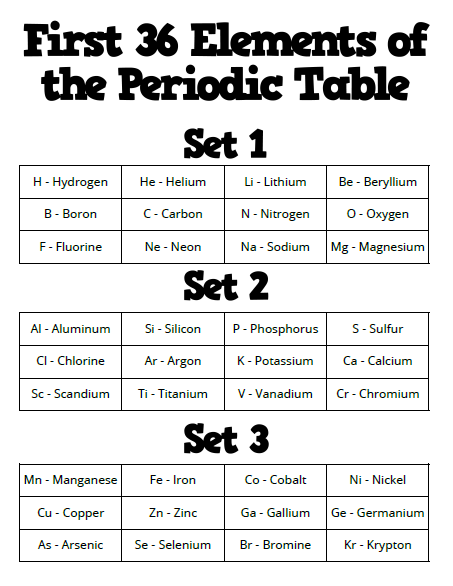
Here’s the finished product:
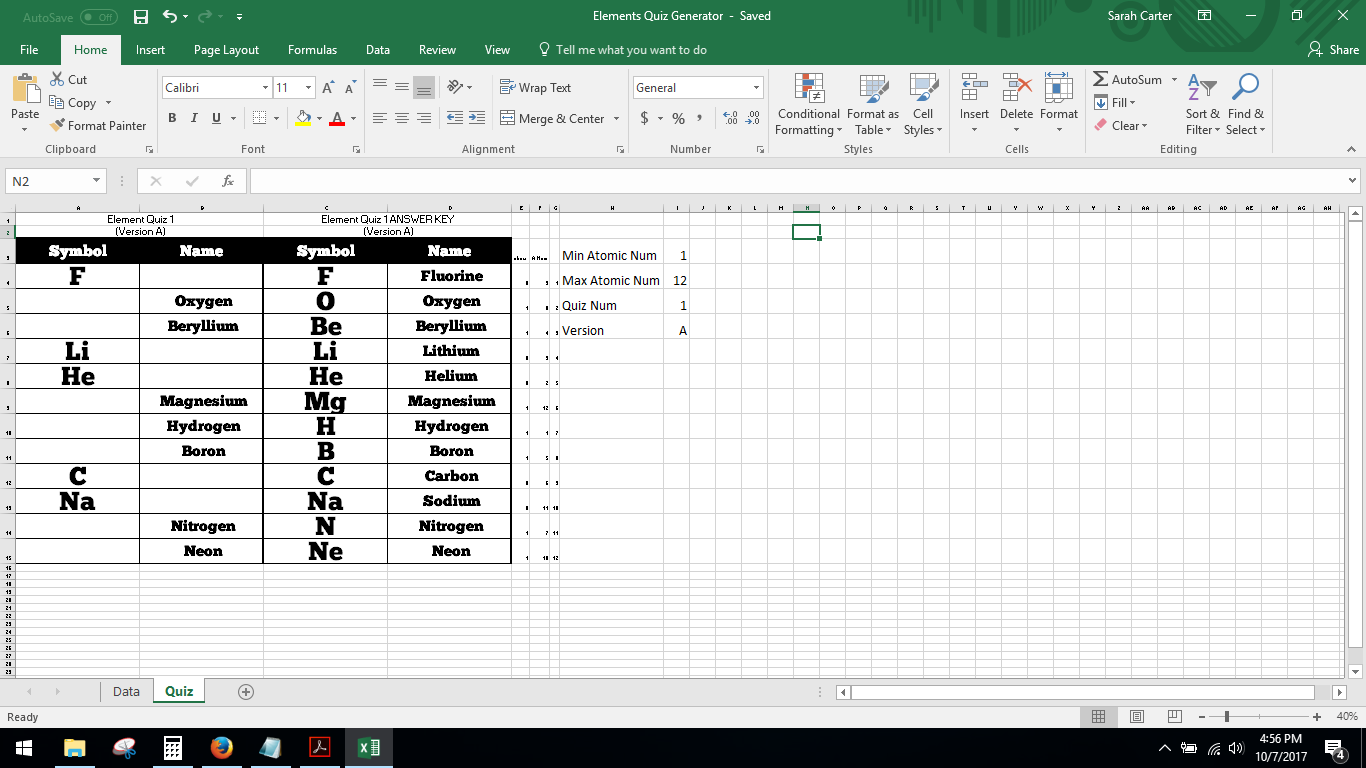
Change the version letter, and the spreadsheet will automatically generate a new quiz. Not happy with the new quiz version? Hit F9 to generate a different version.
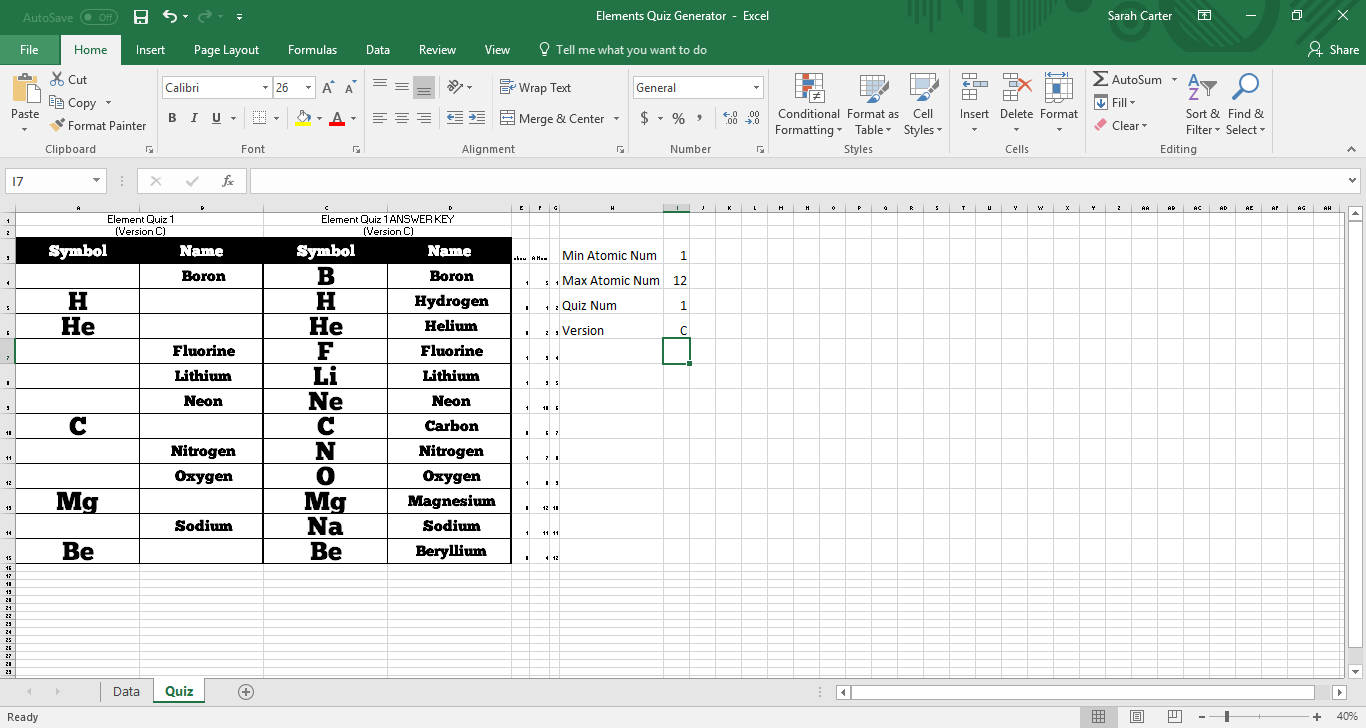
This part of the spreadsheet controls the magic.
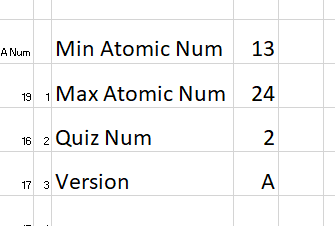
Type in the atomic numbers that you want to quiz students through. Choose a quiz number and version letter. The spreadsheet does the rest.
For my class, we are doing four quizzes.
- Quiz 1 – Elements 1-12
- Quiz 2 – Elements 13-24
- Quiz 3 – Elements 25-36
- Quiz 4 – Elements 1-36
The spreadsheet made it super easy to generate all of these quizzes (including FOUR versions of each) in a matter of minutes. I simply hit F9 until I got a quiz version I wanted, then I selected “Microsoft Print to PDF” as my printer.
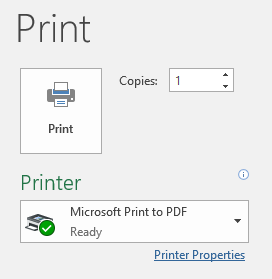
Each PDF contains a quiz and the corresponding answer key!
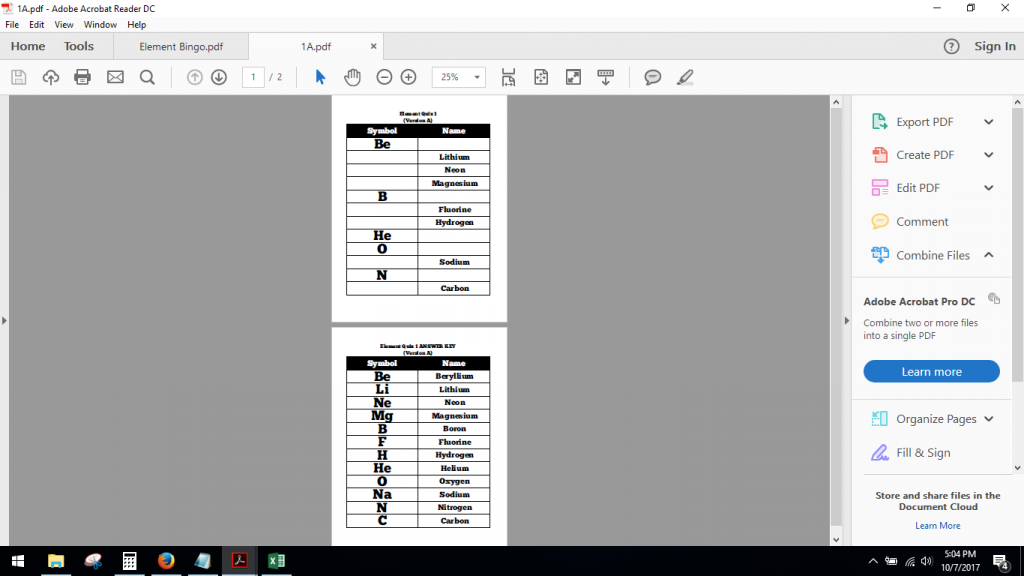
Here’s what the finished element quiz looks like:
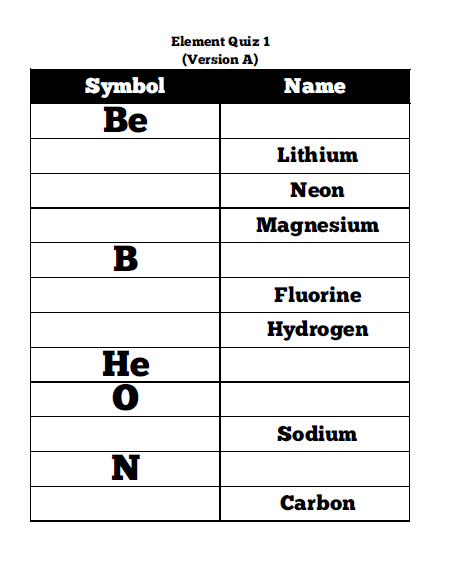
And, here’s the corresponding answer key.
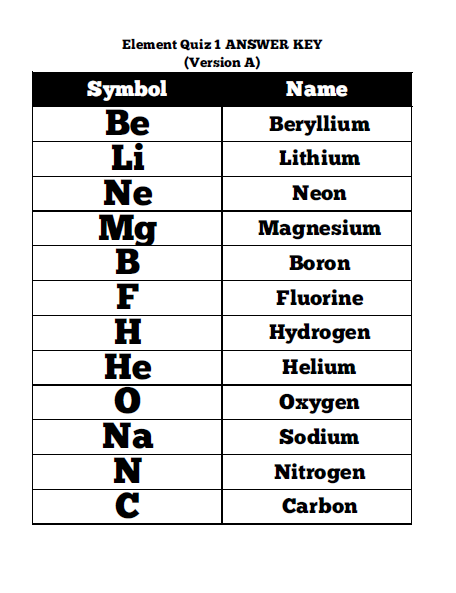
Please check out my other chemistry resources for more free downloads.
Free Download of Element Quiz Generator and Element Quizzes
Click here to Download
Element Quiz Generator (EXCEL)
1472 downloads – 32.02 KB
Click here to Download
First 36 Elements Study Guide (PDF)
1397 downloads – 133.03 KB
Click here to Download
Element Quizzes – ALL (ZIP)
1421 downloads – 105.23 KB
Click here to Download
Element Quiz 1A (PDF)
1283 downloads – 12.73 KB
Click here to Download
Element Quiz 1B (PDF)
1361 downloads – 12.72 KB
Click here to Download
Element Quiz 1C (PDF)
1262 downloads – 12.73 KB
Click here to Download
Element Quiz 1D (PDF)
1282 downloads – 12.72 KB
Click here to Download
Element Quiz 2A (PDF)
1294 downloads – 12.73 KB
Click here to Download
Element Quiz 2B (PDF)
1189 downloads – 12.73 KB
Click here to Download
Element Quiz 2C (PDF)
1230 downloads – 12.71 KB
Click here to Download
Element Quiz 2D (PDF)
1256 downloads – 12.74 KB
Click here to Download
Element Quiz 3A (PDF)
1227 downloads – 12.77 KB
Click here to Download
Element Quiz 3B (PDF)
1244 downloads – 12.76 KB
Click here to Download
Element Quiz 3C (PDF)
1249 downloads – 12.76 KB
Click here to Download
Element Quiz 3D (PDF)
1227 downloads – 12.75 KB
Click here to Download
Element Quiz 4A (PDF)
1261 downloads – 12.74 KB
Click here to Download
Element Quiz 4B (PDF)
1250 downloads – 12.73 KB
Click here to Download
Element Quiz 4C (PDF)
1347 downloads – 12.75 KB
Click here to Download
Element Quiz 4D (PDF)
1226 downloads – 12.73 KB


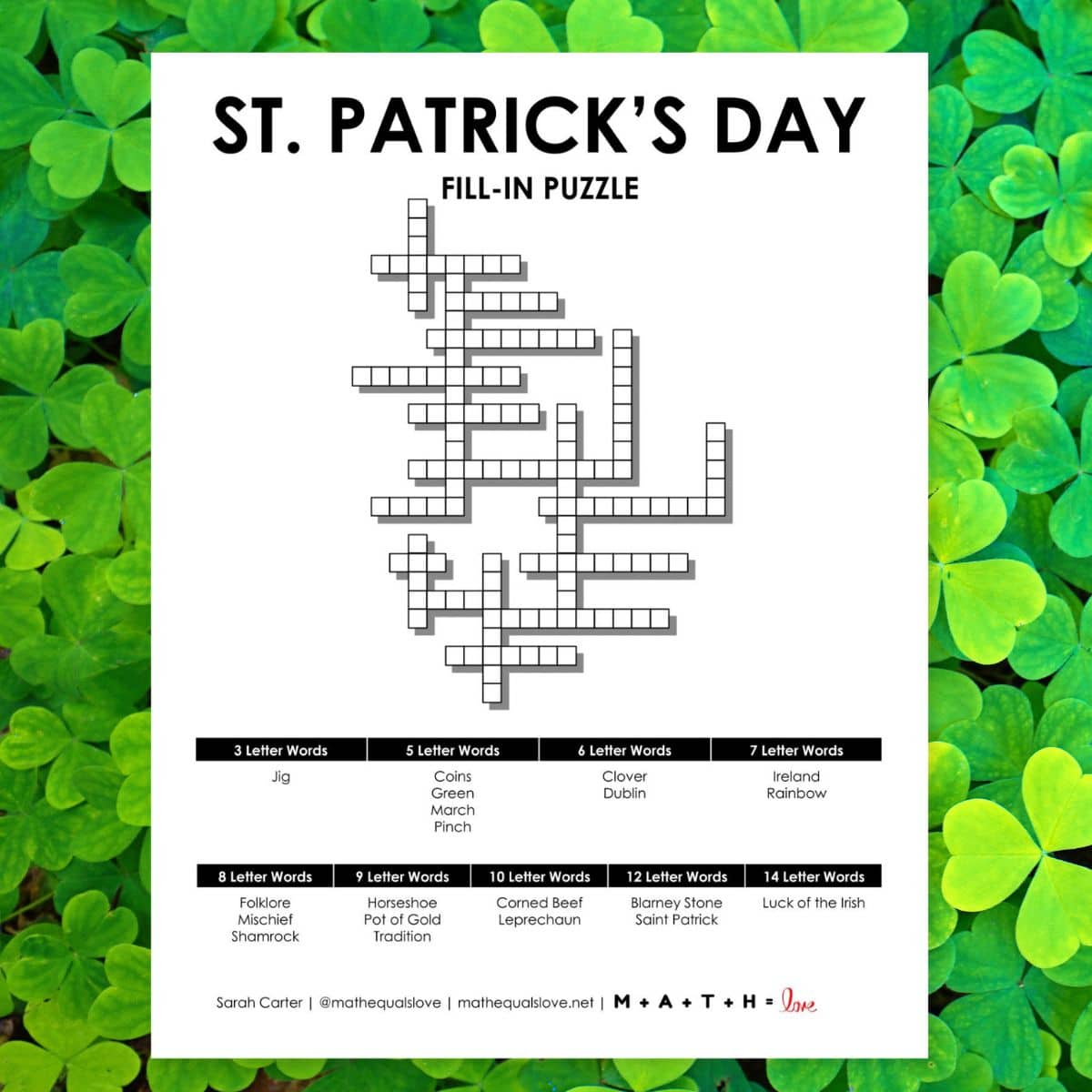
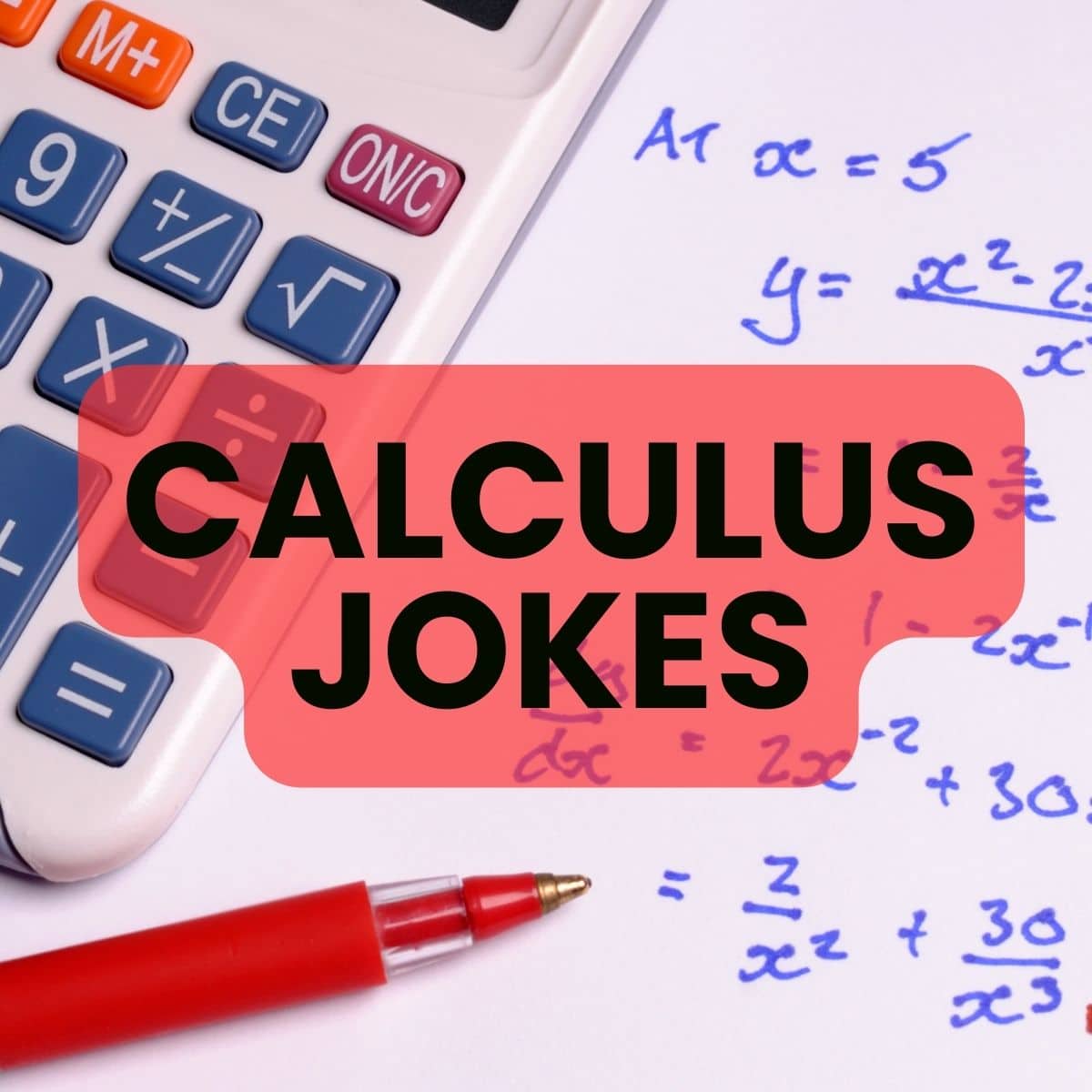
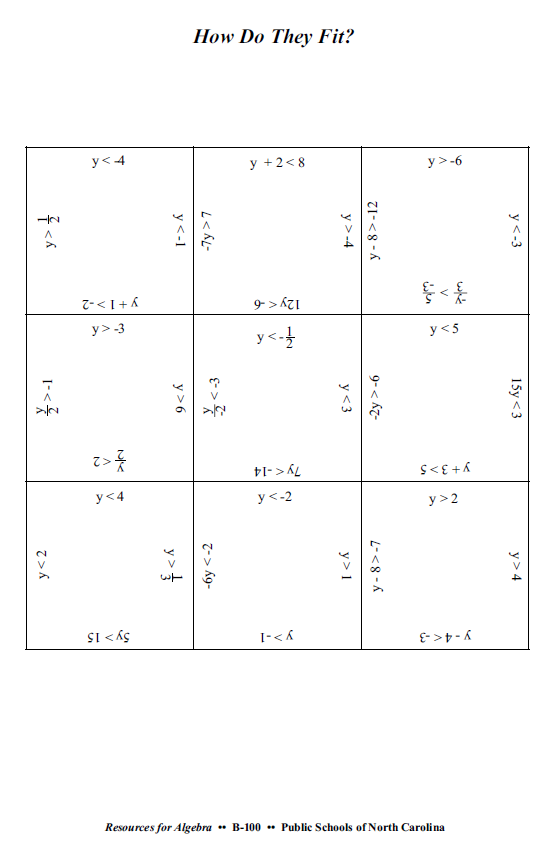


Wow this is great and available even before I need it. Thank you for sharing yours and your husband's resources!!! So very appreciated!!! I see the excel template has other information so will you use it for other things in future like electron configurations, atomic mass etc?